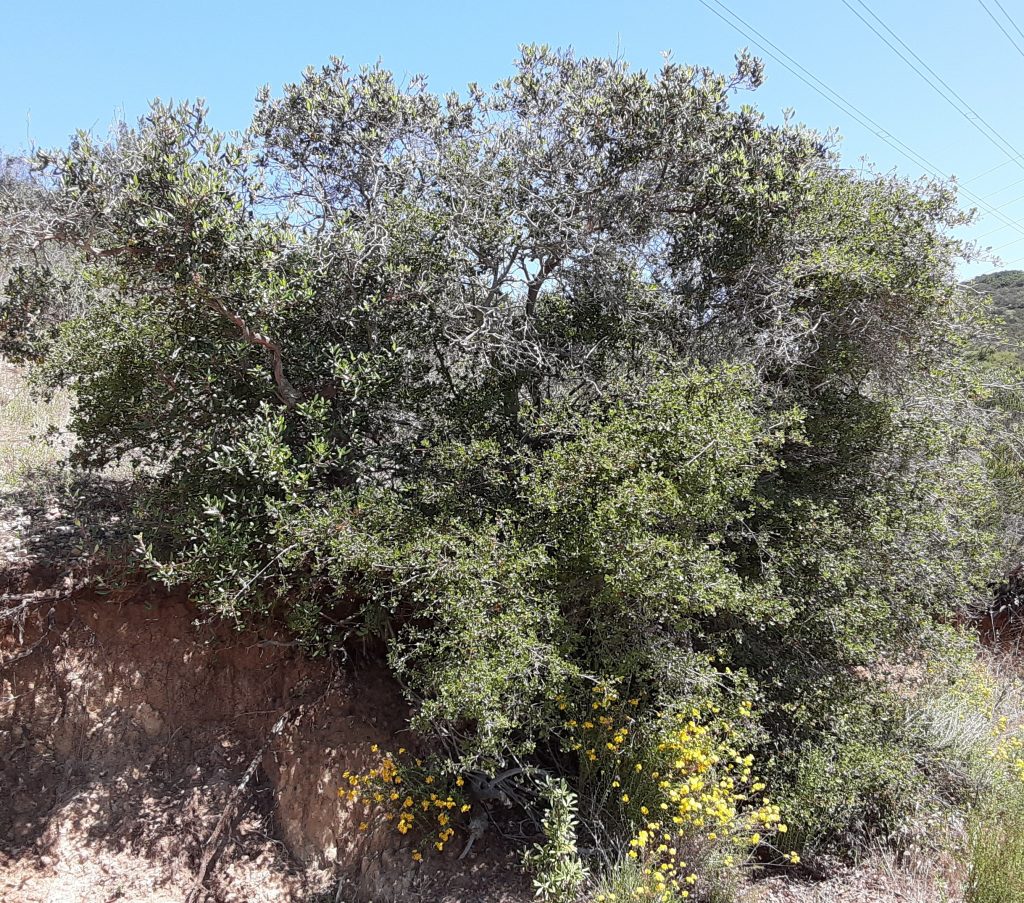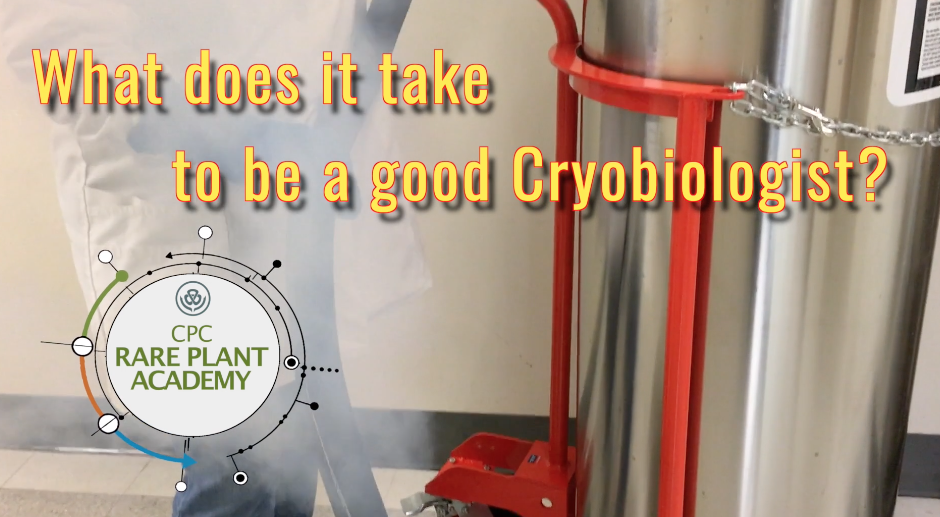
Talented cryobiologists Bart Panis, Shin-Ichi Yamamoto, Meera Das, Daniel Ballesteros, Chris O’ Brian, and Rachel Folgado describe what they believe makes for a good cryobiologist. Among the many qualities they discuss are such attributes as patience, fine motor skills, dedication, enthusiasm, a desire to preserve material for future generations, and above all, passion. […]
Read More…
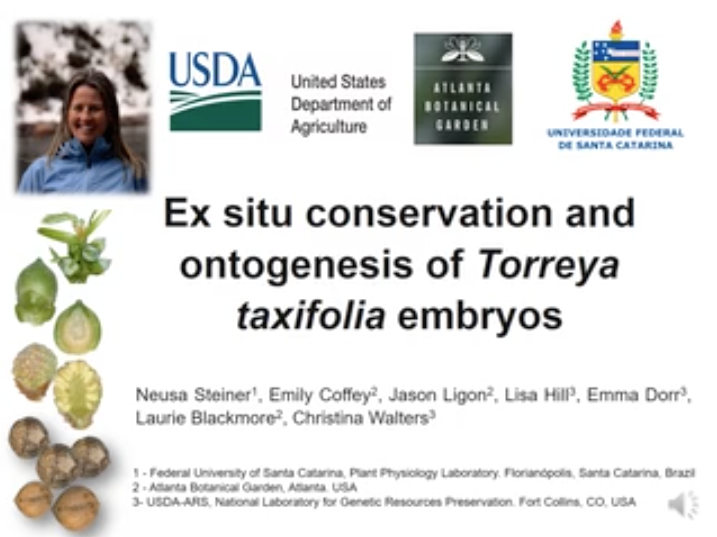
Neusa Steiner, Federal University of Santa Catarina, Emily Coffey, Atlanta Botanical Garden, Jason Ligon, Atlanta Botanical Garden, Lisa Hill, USDA-ARS, Emma Dorr, USDA-ARS, Laurie Blackmore, Atlanta Botanical Garden, Christina Walters, USDA-ARS Torreya taxifolia Arn (Taxaceae) is an ancestral evergreen tree on the brink of extinction. This dioecious plant is found in the Florida panhandle and is threatened by a fungal pathogen. […]
Read More…
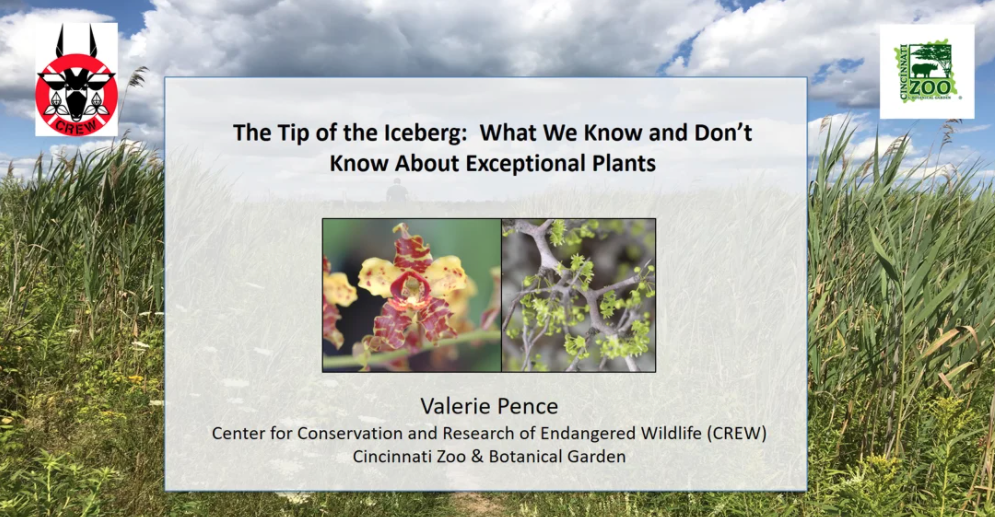
Valerie Pence, Cincinnati Zoo & Botanical Garden Plant species that, either through seed availability or physiology, are unable to be conserved and recovered using conventional seed banking practice have been designated as exceptional plants. A definition of exceptionality has recently been put forward, describing four factors that contribute to this condition, depending on what step in […]
Read More…
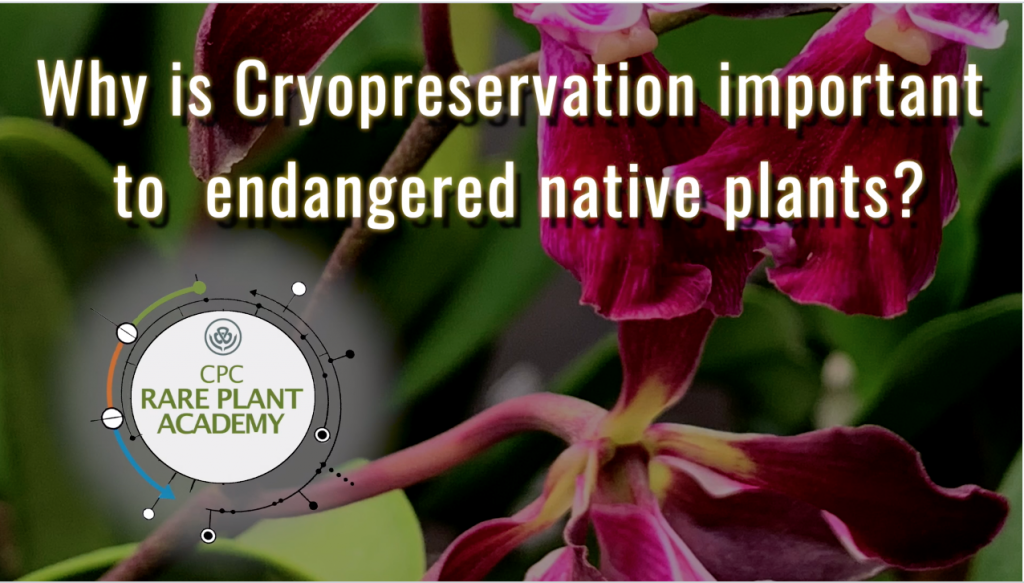
Cryopreservation, a method of storing tissues in liquid nitrogen, is becoming increasingly important to rare plant conservation. This is because many plant species, including large groups such as oaks, orchids, and bryophytes, are unable to be stored long term using more traditional seed banking methods. Using cryopreservation techniques, researchers are able to preserve greater crop […]
Read More…
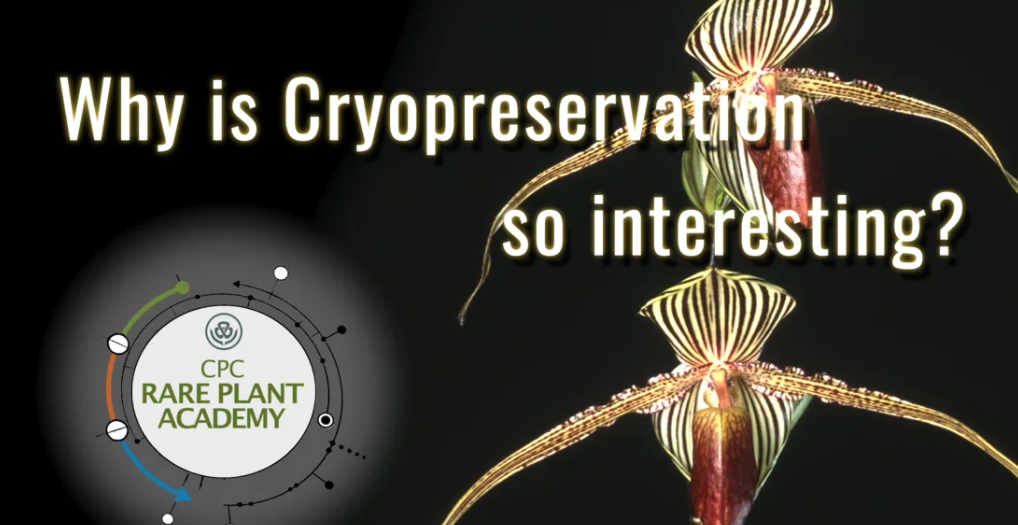
Plant Conservationists have found that many plants are unable to be stored using traditional seed banking techniques. To address this issue, researchers are exploring the use of cryopreservation, the storing of tissues in liquid nitrogen, to preserve exceptional species. In this video scientists Daniela Impe, Christina Walters, and Karin Van Der Walt explain how they […]
Read More…

Dr. Valerie Pence, Cincinnati Zoo & Botanical Garden Although there are published protocols for initiating shoot cultures for over 20 oak species, the cryopreservation of oak shoot tips has not been reported. We have applied the droplet vitrification protocol to four species of oaks, including the endangered Q. hinckleyi, in order to evaluate the feasibility of […]
Read More…

Joyce Maschinski, Center for Plant Conservation Joyce Maschinski interviews world famous plant cryo-biologists to learn about how cryopreservation of plant cells is imperative for the future of food. Many food crops can’t be preserved using traditional seed preservation methods. For some of these species cryopreservation is the only long term option. Plant researchers from across […]
Read More…
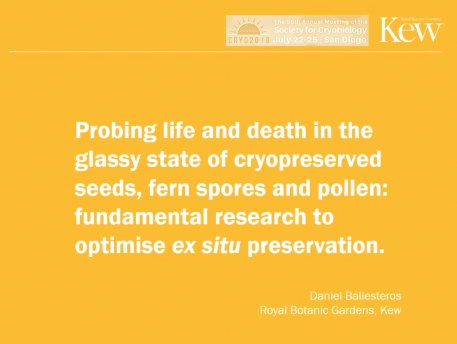
Dani Ballesteros, Christina Walters, Hugh W. Pritchard Royal Botanic Gardens Kew, Wellcome Trust Millennium Building, United Kingdom, United States Department of Agriculture., United States Often various plant propagules (e.g., seeds, pollen and fern spores) can be stored dry (or partially dry) at sub-zero temperatures for extended periods of time. Under such conditions the cell cytoplasm […]
Read More…

Meera Das*, Reema Diengdoh, Seram Devika, Suman Kumaria, North-Eastern Hill University, Shillong, India, *Speaker North-east India, being one of the global hot-spots, is considered the richest reservoir of diverse plant genetic resources. However, the vast utilities of plant species in medicines, ornamentals, fragrances, urbanization and illegitimate harvest of plant genetic resources have immense impact on […]
Read More…
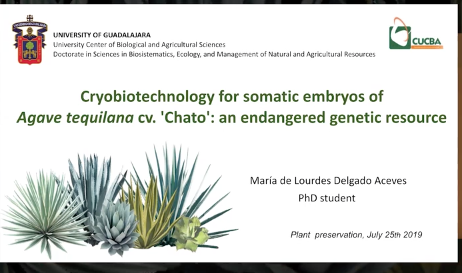
Lourdes Delgado-Aceves, Maria T. Gonzalez- Arnao, Liberato Portillo, Raquel Folgado, CUCBA-University of Guadalajara, University of Veracruz, The Huntington Library, Art Collections and Botanical Gardens Agave tequilana cv. chato is an important resource widely used to produce a very emblematic and popular Mexican beverage called mezcal; however, its wild populations are currently severely degraded due to […]
Read More…
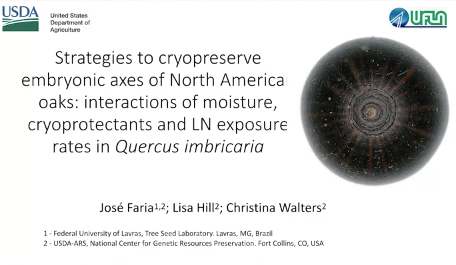
Jose Faria, Lisa Hill, Christina Walters, Tree Seed Laboratory, Federal University of Lavras, Brazil, USDA-ARS, National Center for Genetic Resources Preservation, United States Quercus imbricaria is included in the red oak group (Lobatae) and is broadly distributed in the Midwestern US. The embryonic axes are about 1 mg dry mass and have 0.68 g H2O/g […]
Read More…
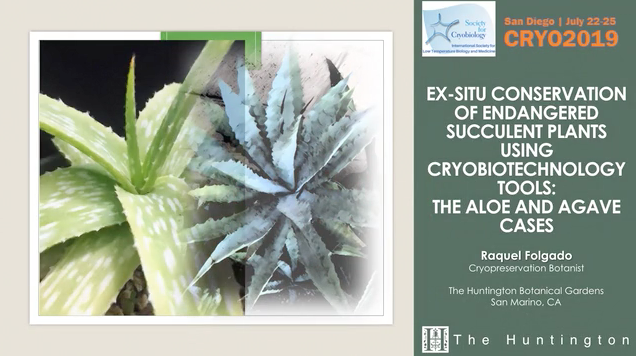
Josette Tin, Taylor La Val, Sean Lahmeyer, John Trager, Raquel Folgado*, The Huntington Library, Art Collections and Botanical Gardens, San Marino, CA., United States, *Speaker Succulent plants are significant to the horticultural industry, and they are also sources for food, fibers, medicines, and cosmetics. The main threats for the wild population of these often emblematic […]
Read More…
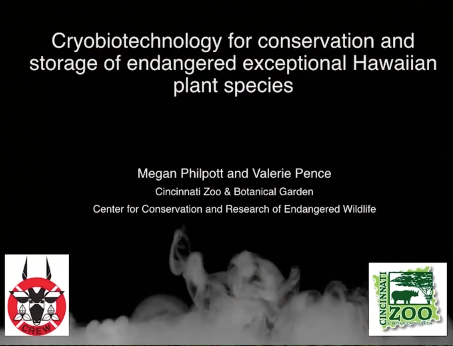
Megan Philpott, Valerie PenceL*, Cincinnati Zoo & Botanical Garden, United States *Speaker Threats to global plant biodiversity compel the need for ex situ collections of species worldwide. However, the subset of species known as exceptional plants are often overlooked. These species produce few or no seeds or produce recalcitrant seeds. The Center for Conservation and […]
Read More…
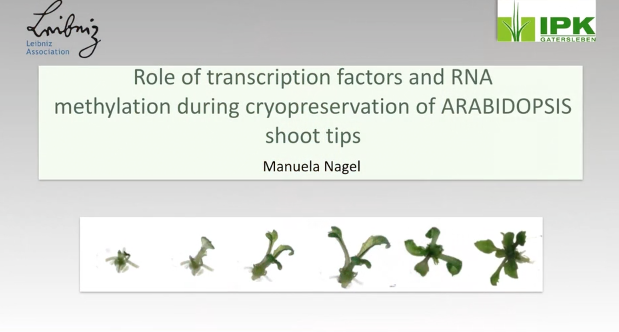
Manuela Nagel, Hans-Peter Mock, Markus Kuhlmann, Johanna Stock Leibniz Institute of Plant Genetics and Crop Plant Research (IPK), Germany Plant cryopreservation is a back-up approach for vegetatively propagated genetic resources. The cryopreservation process represents a model for complex stress response mechanisms. During cryopreservation, meristematic tissues have to cope with several stresses including mechanical, osmotic and […]
Read More…
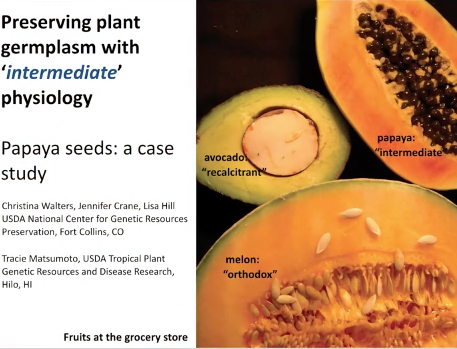
Christina Walters, Jennifer Crane, Lisa Hill, United States Department of Agriculture., USDA-ARS Seeds of papaya (Carica papaya) are tolerant to desiccation, but they are quickly damaged when stored at -5 to -20C. The seeds have a high lipid content that reflect “tropical oils,” which are high in saturated and mono-unsaturated fatty acids. Differential Scanning Calorimetry […]
Read More…
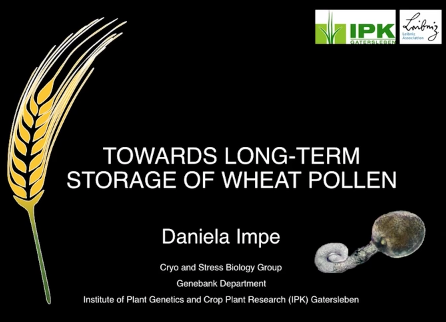
Daniela Impe, Daniel Ballesteros, Till Ischebeck, Claudia Köpnick, Hardy Rolletschek, Michael Melzer, Manuela Nagel, Leibniz Institute of Plant Genetics and Crop Plant Research (IPK) Germany, Royal Botanic Gardens, Kew, United Kingdom, Department of Plant Biochemistry, Georg-August University Göttingen, Germany Cryopreservation of pollen is used to preserve and exchange nuclear genes of plant genetic resources and to […]
Read More…
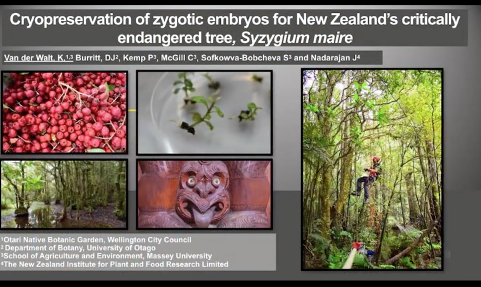
Karin Van Der Walt, Jayanthi Nadarajan, David J Burritt, Peter Kemp, Otari Native Botanic Garden – Wellington City Council & Massey University New Zealand, The New Zealand Institute for Plant and Food Research Limited, University of Otago, Massey University The pandemic pathogen, Myrtle Rust(Austropuccinia psidii) was discovered in New Zealand in 2017 and has now […]
Read More…


